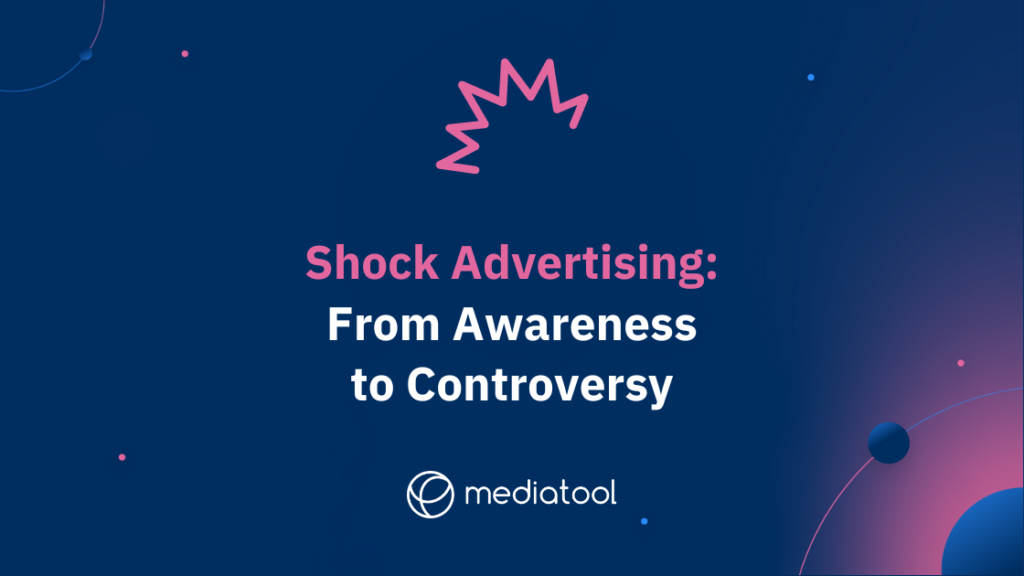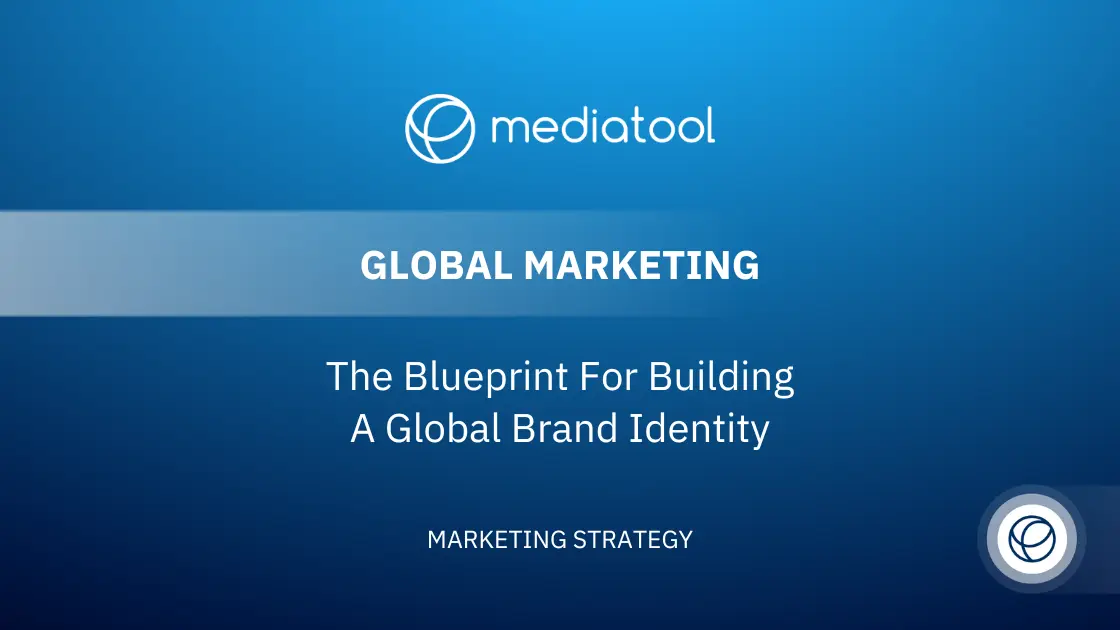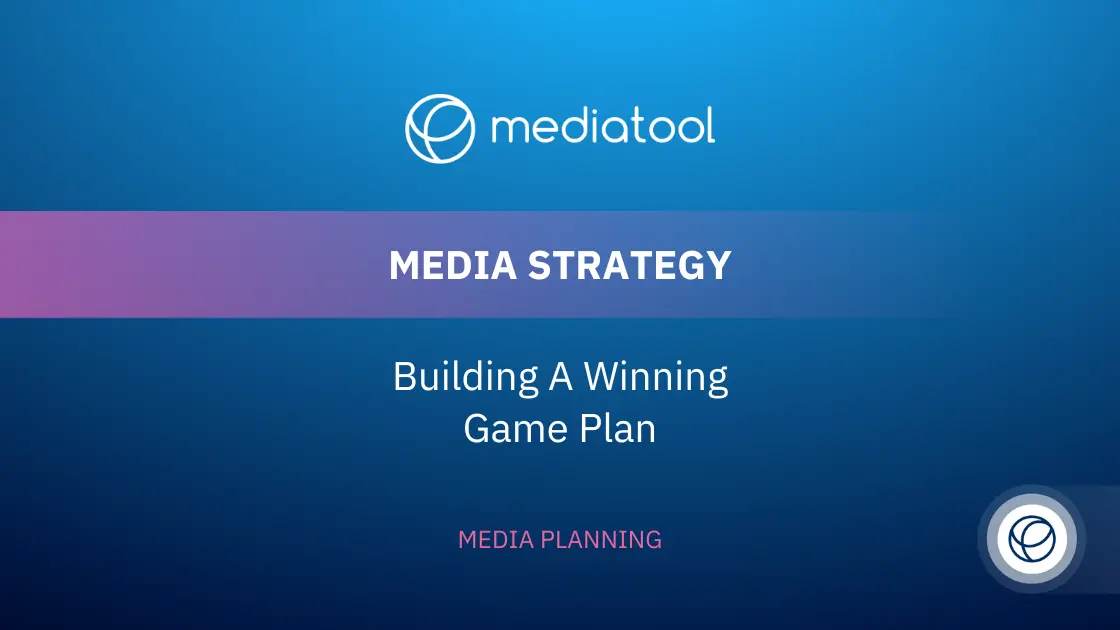What is Shock Advertising?
Shock advertising, often referred to as “shockvertising”, is a communication method brands and companies use to capture viewers’ attention by evoking strong positive or negative feelings. This advertising strategy aims to break through the clutter of traditional ads and ensure that the brand or message remains top-of-mind for the target audience. This advertising content intends to attract attention and often raise awareness or challenge societal norms.
For many, shock advertising works because it taps into subjects people discuss. Whether taboo subjects like sex, religious taboos, or starkly presenting issues such as animal cruelty and global crises.
For instance, when an ad showed graphic imagery related to animal cruelty, it wasn’t just about disturbing people but about stirring them to action. Shock ads are an intriguing marketing strategy designed to invoke reactions and ensure the brand gains widespread attention.
Types of Shock Advertising
Shock advertising, distinct from traditional advertising, has gained popularity and considerable attention for its potential to instantly grab the viewer’s attention. However, not all shock advertisements are the same. There are different types (digital, television media, print ads), each designed with a specific target audience and marketing strategy. Here’s a closer look:
Fear Appeals
One of the most common types of shock ads, these aim to induce fear to influence consumer behavior. Anti-smoking ads showcasing the harmful effects of smoking are classic examples of this type. Fear appeals work best when they instill fear and provide a solution or a positive course of action. If done effectively, these advertisements can raise awareness of vital issues and prompt people to make informed choices.
Taboo Subjects and Offensive Advertising
These shock ads touch upon taboo subjects or religious taboos, hoping to provoke strong feelings and widespread attention. By doing so, the brand attempts to break social norms. An advertisement that exploits teenage models or presents them in poor light can fall into this category. Brands must walk a fine line here, ensuring the message doesn’t overshadow the brand’s reputation or the positive light they intend to portray.
Disturbing Imagery
Some shock adverts rely on shocking pictures or disturbing imagery to invoke strong reactions from viewers. The shock value is heightened when the disturbing images are unexpected, forcing the audience to pay attention. Car accident ads that use disturbing images to showcase the dire consequences of not following traffic rules are an example.
Blunt and Direct Messaging
These ads are all about being as straightforward as possible, sometimes even brutally honest, to shock people into paying attention. The aim is not to disturb but to surprise with the blunt slogans. While no blatant examples like “sex sells” or “fish hook” campaigns come to mind, brands have occasionally used very direct messaging to highlight their unique selling points.
Exploiting Social Issues
Other brands use shock advertising campaigns to address pressing social issues like animal cruelty. Such campaigns are designed not just to advertise a product but to bring about social change or increase awareness about a particular issue.
Hyperbolic Exaggeration
Some shock advertisements exaggerate scenarios to the extreme to make a point, ensuring they stick in the minds of consumers and guarantee brand recall. An ad that showed a police officer ticketing a fish for swimming too fast would be a humorous example of hyperbolic exaggeration.
Subverting Expectations
These ads play on consumer expectations and then subvert them for shock value. For instance, a brand might start their ad like any other in their industry and then introduce an unexpected twist, challenging viewers’ expectations and ensuring the brand stands out.
Brands that venture into shock advertising should remember that while it can be a potent communication method to attract attention, it also comes with risks. The negative impact of a poorly received shock advertisement can be long-lasting. Brands must be conscious of their target audience’s sensibilities and the broader societal values they operate within.
A successful shock advertising campaign can increase brand awareness significantly, but it requires careful planning and a deep understanding of the intended audience.

How Shock Advertising Affects Our Brains
Shock advertising doesn’t just aim to shock people for the sake of attention; it taps into our primal emotions. The shock value stimulates our brains in a way traditional advertising might not, leveraging fear appeals and emotional responses.
This heightened state of alertness or emotion often leads to better brand recall, as the shocking advertisement remains etched in memory longer than a regular print ad. For brands, this means the possibility of increased sales and brand awareness.
Risks of Shock Advertising
While shock advertisements can be wildly successful and have a positive effect on consumer behavior, they come with risks:
Negative Impact on Brand Reputation
Ads considered in poor taste can harm brand reputation. For instance, the Reebok “Cheat on Your Girlfriend” ad campaign was seen by many as offensive, causing the brand to pull the ad and face backlash.
Banned Ads
Some shock ads can be banned by advertising standards authorities because of their content. Brands need to ensure their shock advertising campaigns tread the fine line between impactful and inappropriate.
Shock Fatigue
Over-reliance on shock factor can lead to audiences becoming desensitized. This means future shock advertising campaigns might not have the same impact. Over time, if every brand opts for this method, viewers might fast forward through shock ads or ignore them altogether, reducing the efficacy of the advertising method.
Incorporating Shock Advertisements in Your Marketing Strategy
Brands must understand their target audience before diving into a shock advertising campaign. Knowing their sensibilities, what will resonate with them, and what will cross the line is essential. A marketing strategy incorporating shock ads should:
Test the Ad on Sample Audiences
Get feedback from new customers before a full-scale launch. Testing on a diverse group can provide insights into how the ad might be perceived in the larger market. It’s better to adjust based on a small group’s feedback than face widespread backlash.
Prepare for Backlash
Even well-researched ads can face criticism. Brands should be ready with a response plan, whether standing by the ad, issuing a public apology, or pulling it. Understanding the potential negative impact on the brand’s reputation is crucial.
Continuous Monitoring
Once the shock ad campaign is live, monitoring consumer behavior and real-time feedback is vital. By doing so, brands can quickly pivot if they see unforeseen negative effects.
Effects of Shock Advertising Based on Audiences
Shock advertising, by design, is intended to provoke, stir emotions, and command attention. Yet, its impact is far from uniform across different audience groups.
Let’s check out how different demographics react to shock advertising and the implications for brands:
Generational Differences
As initially noted, younger generations, particularly Gen Z and millennials, might appreciate the boldness of a shock advertisement. They often value authenticity, directness, and brands that challenge the status quo. Thus, they might perceive a daring shock ad as a brand’s commitment to ‘keeping it real.’
On the contrary, older generations, like Baby Boomers, who grew up with more traditional advertising norms, might find the same content distasteful or too aggressive. Their formative years were defined by different cultural touchstones, which could lead them to interpret shock ads differently.
Cultural and Regional Nuances
An ad considered shocking in one culture might be deemed regular or even mundane in another. Cultural norms, religious beliefs, personal ideals, and societal values significantly shape one’s perception. For example, an advertisement pushing boundaries on gender roles might be praised for its progressiveness in some societies, while in others, it could spark outrage.
Personal Values and Beliefs
Individual reactions can be polarized based on personal values and beliefs, even within a single demographic segment. An eco-conscious individual might applaud a shock advertisement highlighting the dire consequences of climate change, whereas someone skeptical about the topic might dismiss the same ad as propaganda.
Past Experiences
An individual’s past experiences can deeply influence their perception. For instance, someone who has firsthand experience with a car accident might have a visceral reaction to a shock advertisement showcasing the repercussions of distracted driving. In contrast, others might see it as just another cautionary tale.
Desensitization Over Time
Repeated exposure to shock advertising can lead to ‘shock fatigue.’ Over time, as audiences are continuously bombarded with shocking content, the ability of such ads to evoke strong reactions diminishes. What was once considered shocking can soon become the norm, requiring advertisers to push the envelope further to achieve the desired effect.
Influence of Peer Groups
Social circles play a crucial role in shaping one’s views. If a shock advertisement becomes a hot topic of discussion within a peer group, individuals might be influenced by the collective opinion of social values, either aligning with it or rebelling against it.
Medium of Delivery
The platform on which a shock ad is delivered can also influence reactions. For instance, a shocking print ad in a niche magazine might be perceived differently than the same ad going viral on social media, where it’s subject to rapid public scrutiny and commentary.
While shock advertising can be a powerful tool to garner attention, its effects are multifaceted and heavily contingent on the audience’s demographic and psychographic profile. Brands must exercise caution, conducting thorough audience segmentation and research before launching a shock advertising campaign. This ensures the message resonates with the intended target while minimizing potential backlash.
Examples of Shock Advertising (The Good, The Bad, and The Downright Ugly)
The Good: Nike’s Colin Kaepernick Campaign centered around the athlete’s decision to kneel during the national anthem as a protest. It resonated with many, increased brand awareness, and even boosted their sales.
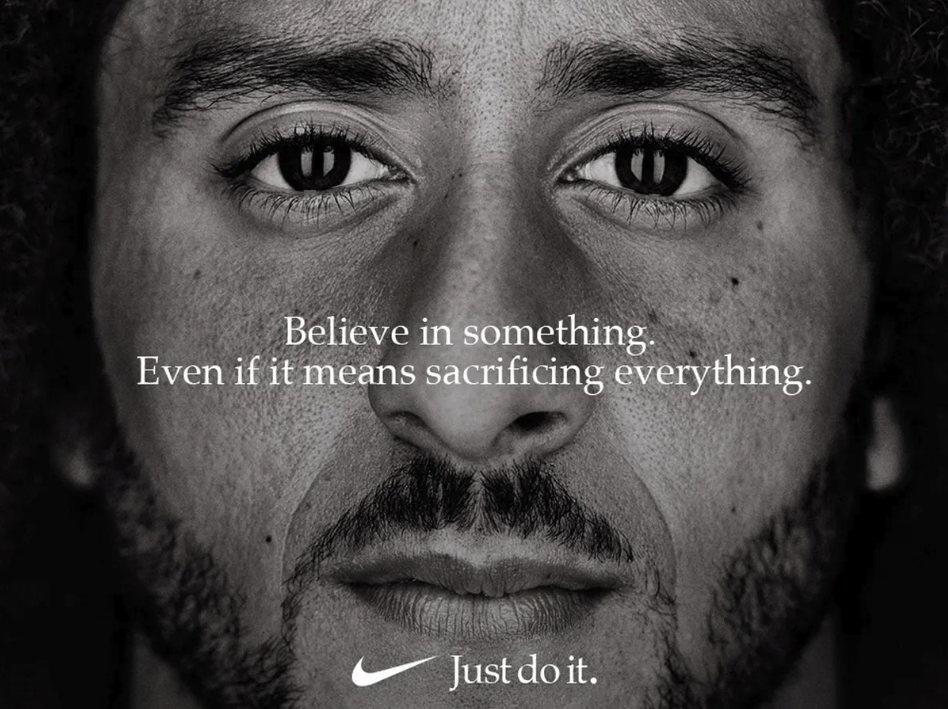
The Bad: Kendall Jenner’s Pepsi Commercial faced backlash for insensitivity, suggesting a soda could solve police officer-protestor tensions. Such ads, although gaining widespread attention, can attract attention in a negative light, harming the brand.
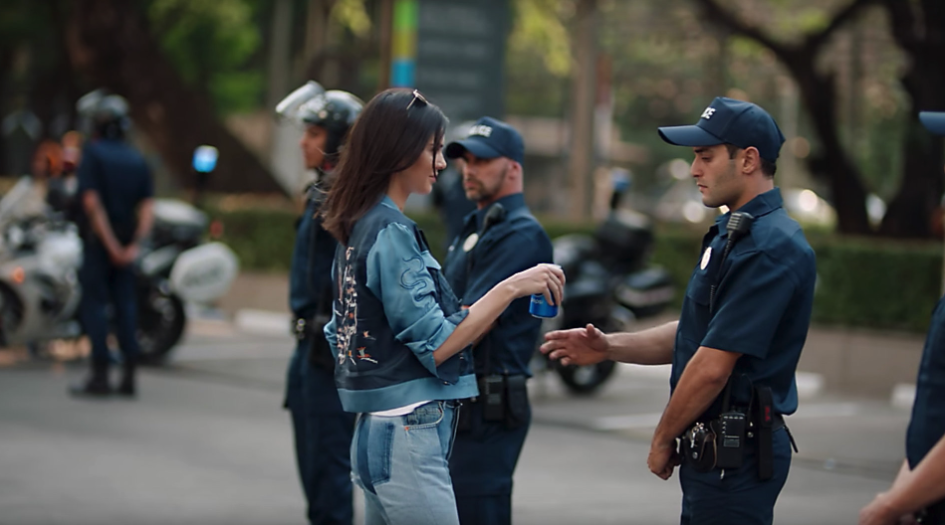
The Ugly: Skittles’ “Settle It the Usual Way” Campaign, which seemed to make light of violence, was met with widespread attention but not in a positive way. Controversies like these show the fine line between creative shock value and offensive advertising.

Another Example of Shock Advertising: Burger King
Perhaps one of the most notable examples is the “Moldy Whopper” ad campaign. In this campaign, Burger King showcased a time-lapse of a Whopper burger becoming moldy over 34 days.
The idea was to highlight their commitment to removing artificial preservatives from their products. The ad garnered widespread attention for its unconventional approach, as showing decomposing food is quite rare in the fast-food industry.
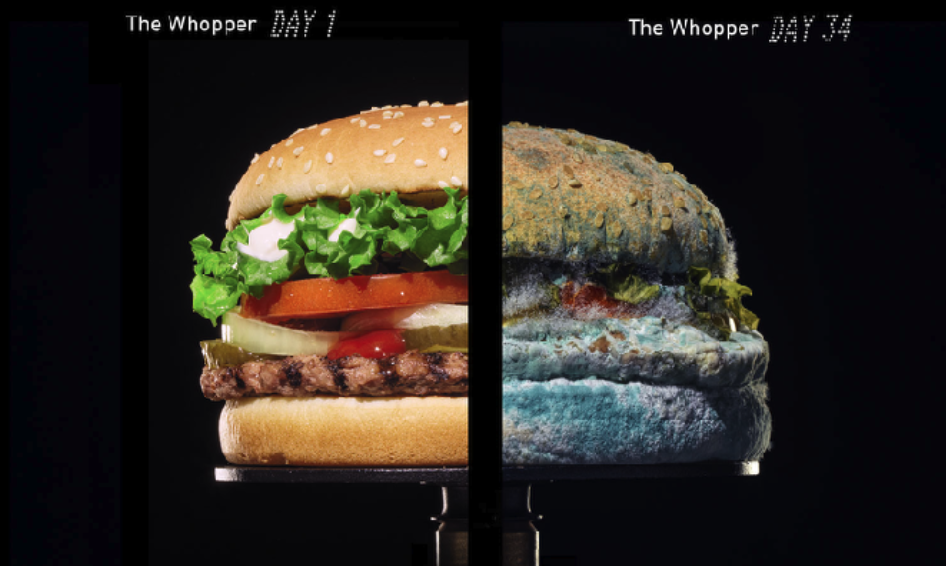
Ethics in Media Communications: Cases and Controversies
Shock advertising often brings up ethical concerns. Patagonia’s campaign urging consumers to buy less was seen by some as a genuine plea for sustainability, while others saw it as a marketing gimmick. The line between ethical shock advertising and manipulative tactics is often blurry, and brands need to tread carefully.
Brands must be cautious about adhering to social norms and not veering into offensive advertising, especially when touching on taboo subjects like religious taboos or exploiting teenage models.
The Controversial Fear Appeals
Fear appeals in shock advertisements, like showing the detrimental effects of smoking, can be powerful. But there’s a debate on whether fear-based ads genuinely alter behavior or create short-lived shock value. Many argue that for fear appeals to be effective, they need to be paired with actionable advice so consumers are empowered rather than paralyzed with fear.
Can Marketing Teams Use Shocking Content for All Products?
While shock advertising can be a helpful tool, it’s not suitable for all products or services. For instance, weight loss programs might benefit from shocking pictures showing the adverse effects of obesity, but the same strategy would be inappropriate for most children’s products.
Brands need to understand where the shock factor can be effective and where it might be considered in poor taste. A shocking advertisement can attract attention, but if it leaves viewers with intense feelings of discomfort or fear without a clear message, the negative impact can overshadow the brand’s reputation.
Verticals Where Shockvertising Can Work While Using Native Advertising
Native advertising seamlessly blends in with the content the user is viewing. Shock ads can be used in verticals such as:
Adult Offers
Ads addressing sensitive adult issues can benefit from the shock factor, but brands need to ensure they don’t cross the line into disturbing imagery or content.
Sweeps, Casino, and Cryptocurrency
These competitive industries can utilize shock advertising to stand out. Shock marketing aims to grab the viewer’s attention instantly, making them more likely to engage with the ad.
Health and Safety
Car accident ads, for one example, can utilize shock advertising to raise awareness about road safety. By showing the negative effects of reckless driving, they hope to influence positive behavior.
Environmental Causes
Shock ads showing the effects of animal cruelty or deforestation can be wildly successful in garnering widespread attention and driving people to take action.
Conclusion
Shock advertising, when used judiciously, can be a powerful tool. It can increase brand awareness, provoke thought, and even drive change. However, brands need to walk a tightrope, ensuring their shock adverts generate the right kind of attention. Shock value for the sake of shock can lead to shock fatigue among audiences.
While brands aim to shock people into remembering their message, the advertising content must also be meaningful. Shock advertising works as a potent communication method if done right, but when executed poorly, it can backfire and harm a brand more than it benefits.
Additionally, in the evolving landscape of consumer engagement, the effectiveness of shock advertising hinges on a brand’s ability to balance edginess with relevance and social responsibility. Brands must consider the broader cultural and societal context in which their ads are released, ensuring that they do not cross the fine line into offensiveness or insensitivity.
In an age where social media can amplify the impact of an ad campaign (for better or worse), strategic planning and a deep understanding of the brand’s core values and target audience are more crucial than ever.
The ultimate goal is to create shock adverts that not only capture attention but also resonate with the audience in a way that is authentic, respectful, and aligned with the brand’s ethos.
